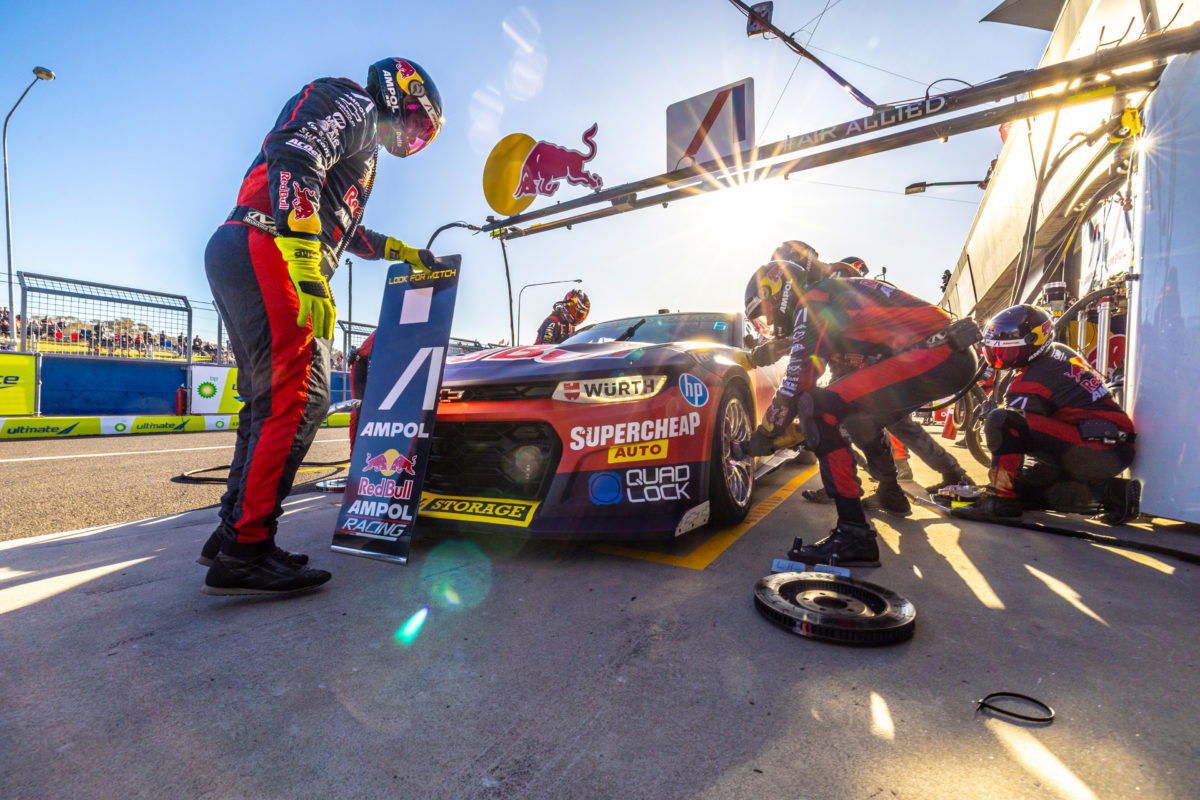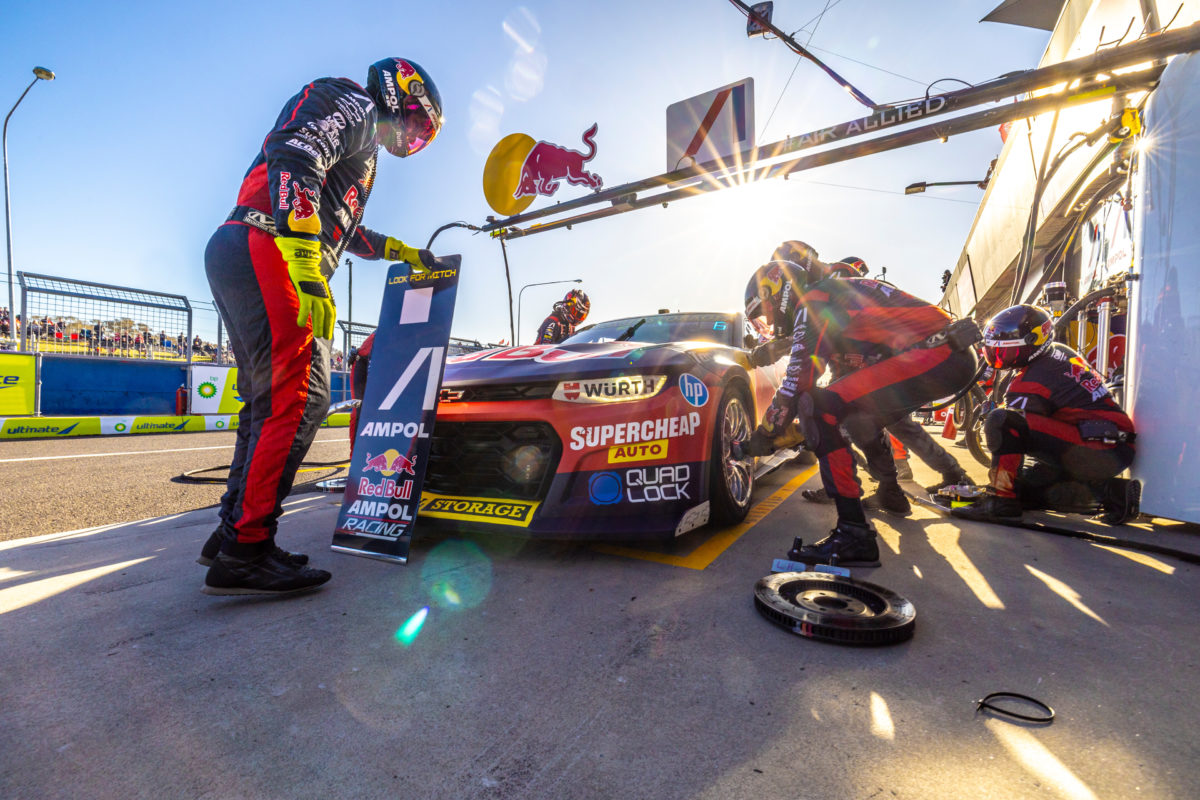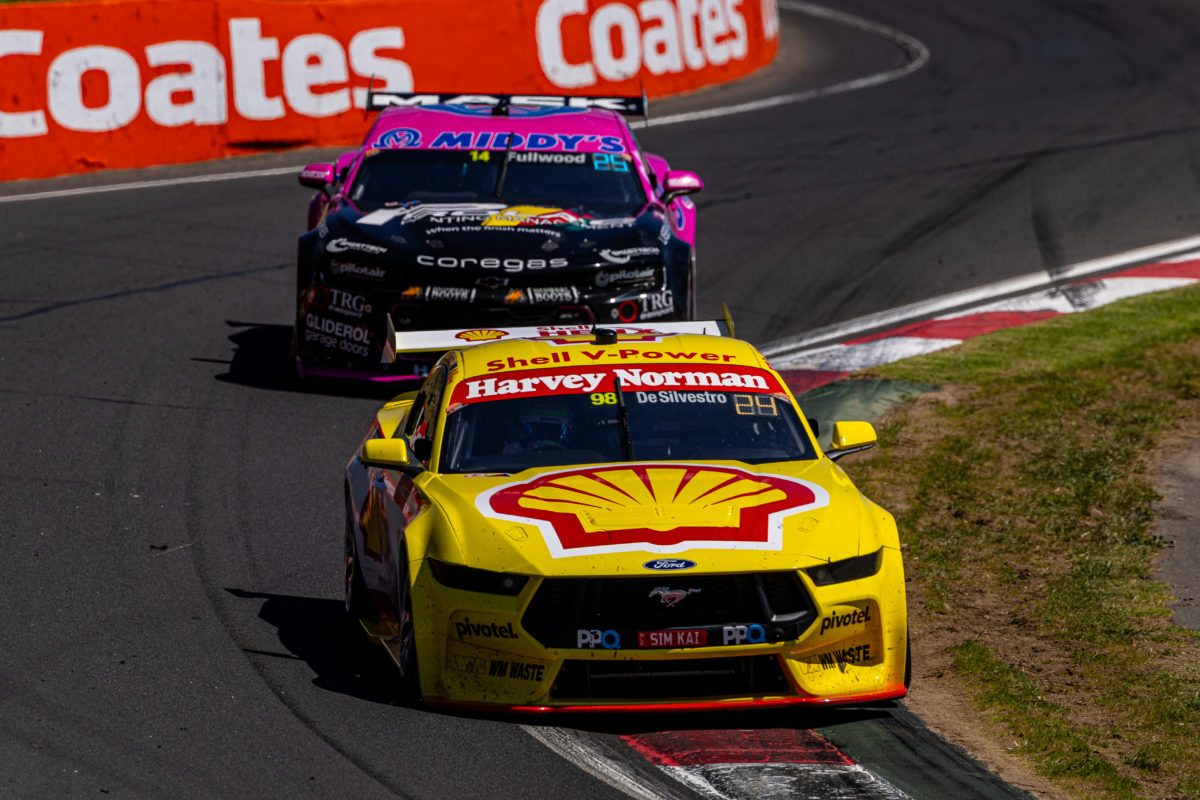

As I mentioned last week, I watched the whole weekend on Fox Sports from the comfort of my living room and with the benefit of a mate on snag duty on the barbie.
First and foremost, the spectacle of the venue itself, with the packed spectator areas and camp sites, was a thing of beauty to me. After the misery of the shocking weather in the build up to the race last year, plus two COVID-restricted races in 2020 and 2021, Mount Panorama was at its stunning, sun-kissed best last weekend.
Next up, there was some great support race action. Highlights worthy of mention were the outstanding performances of Harry King from the UK in the Carrera Cup and the superb Toyota 86 finale. Plenty of racing with Super2/3, V8 SuperUtes and Sports Sedans filled out the programme nicely.
And now to the Supercars track action.
The Gen3 cars look and sound awesome anywhere IMHO, but at Bathurst they are next level. They move around like the cars from 15 or 20 years ago and they visually look hard to drive at the limit again.
The Top 10 Shootout was as good as it gets and, as it turned out, as good as it got from a spectacle point of view! Brodie Kostecki was totally at one with the track and the car and it showed. Hats off to him, but also to everyone who nailed it into the 2:04s last Saturday evening. A magnificent show.
Then came the race.
As I’ve been saying for months, Supercars needs to do something about the tyre. The use of the soft compound this year at the Mountain was plain dumb. Why on earth was it adopted there, of all places?
Was it a fixation with ensuring that the cars were faster than the Super2 cars? Does that matter?
What matters is great racing. And what we got, very predictably in my book, was a boring second half of a race that, over recent years, has become a byword for close finishes more often than not.
Don’t misunderstand me. The teams and drivers that finished on the podium all did a magnificent job and fully deserve the accolades they have received. It’s up to them to maximise the opportunities under the rules and conditions that they’re given.
From a punter’s point of view though, the race left much to be desired. And much of that is down to the tyre selection.
The first half of the race was certainly entertaining and kept you focused. Why? Because there were plenty of very average co-drivers doing a very average job of not only driving in general but managing tyre wear.
Combine that with a handful of co-drivers at the other end of the spectrum doing a superb job and there was action aplenty as the three first half Safety Cars threw out some differing strategic approaches.
There’s no doubt that the standout co-drivers were the three who stood on the podium plus Jamie Whincup and Garth Tander. Predictably, in all five cases.
The issue was always going to be that, as soon as you put the main drivers into the cars for, broadly speaking, the second half of the race, the strategy was entirely predictable. Tyre preservation became the be-all and end-all once again, as in so many races this year. Even the less talented main drivers are still better at this than most of the co-drivers, purely through experience.
No driver could risk driving anywhere near flat out for fear of the tyre dropping off the so-called ‘cliff’ too soon.
And, as we’ve seen all year, there’s a handful of drivers who are better at that than the majority. It was very evident once again last weekend.
We watched a masterful performance of tyre management by the guys at the front of the field, but it wasn’t exciting.
Let’s take a quick look in the rear view mirror to see how it should be.
In 2006, the top three in the Shootout were in the 2:07s. They weren’t hanging around by the standards of the day. Come race day, the final stanza was played out in the 2:09s and even the mid-2:08s on tyres that had been on for 25 laps in that final, nail biting, run to the flag.
In fact, Craig Lowndes’s fastest race lap, on Lap 157, was only a tenth of a second slower than his Top 10 lap! He and Rick Kelly were truly ragging the cars for all they were worth in the last part of that tremendous race.
Compare that with the three second delta between the #97 fastest race lap (set by Richie Stanaway on Lap 4, for goodness’ sake) and SVG’s TTSO time.

This is NOT the way to run the Great Race.
So, what’s the fix? It’s simple in my book. Two changes can revert the race to its former glory and showcase the current Gen3 cars at their best.
Firstly, revert to the hard tyre compound and, secondly, scrap the primary driver/co-driver rule.
Why will these changes solve the issues?
Take the tyre compound first. The hard tyre can be pressed on all day long. No longer will the drivers be going around the best race track in Australia with one hand tied behind their backs. Sure, the qualifying laps will be slower than last weekend, but the low fuel race laps won’t be that much slower, if at all, when the drivers are pressing on.
The tyres will take longer to come up to temperature on out laps, they’ll be more challenging for sure. A bad thing? Not in my book. That’s half the spectacle of IndyCar racing these days.
And we’d also get rid of a large part of the huge amount of off-line soft rubber marbles that were evident on Sunday. The marbles also come together to form those huge round balls of rubber that were lodged under every car during the race. Do we need to wait for one of those to cause a fire, or hit a marshal, before someone takes notice of this side effect of running a compound that is too soft for purpose?
The effect of running a tyre that can be lent on all stint will also lead to driver errors as they’ll be pushing on hard, with far less thought given to tyre preservation. A Safety Car or two in the second half of the race is what creates the close finishes that the viewing public expects these days, like it or not.
Moreover, there’s another reason for reverting to the hard compound tyre and it’s an important one.
From memory, in 2006, teams had 24 new control tyres per car for the Bathurst event. We could bring two or three sets of pre-marked tyres as well.
This year, teams had 52 new tyres per car plus two sets of pre-marked.
Maybe 24 was too low, but 52? It’s not only the cost of the extra tyres that is daft, but the extra wheels, extra tyre pressure sensors etc that are required even with swapping tyres on and off rims regularly.
There’s also an environmental argument here, and it’s one that is taken seriously by an increasing number of people in and around the Sport whether we like it or not. 60 tyres for an approximately six-hour race doesn’t compare favourably with 48 tyres for the Bathurst 12 Hour.
READ MORE: Roland’s View: Supercars simply uses too many tyres
Supercars supposedly has a Sustainability Committee. This should be on the agenda.
As regards the highly controversial co-driver rule, in force since 2010, the column I wrote several weeks ago on this subject certainly got my phone going, with the majority of industry people agreeing with my view that it should be scrapped. Teams would be allowed to run their primary drivers together should they so choose. I stand by what I wrote.
READ MORE: Roland’s View: Supercars’ co-driver rule
Putting aside the other reasons for scrapping the rule, this would have the effect of having a greater array of driver talents on track throughout the race, leading to greater potential for incidents and therefore Safety Cars. Hopefully not to a crazy level, but enough to shake up the order and also to create differing strategic approaches by the big guns.
If I was still in the front line of Team Land, I’d probably be happy to keep the status quo that allows the rich to get richer – namely putting huge emphasis on driver tyre management, and disproportionately rewarding the teams with the best co-drivers, of which there are only a handful.
But I’m not, and I want to watch the Great Race from the edge of my seat again.
I can’t sign off this week without mentioning the performances over the weekend of Oscar Piastri. Australia has a new F1 star and it’s a pleasure to watch him taking it to not only his team-mate but also to Max. Oscar’s Sprint Race victory on Saturday in Qatar was stunning in that Verstappen simply couldn’t run him down.
To be honest, if I was Supercars I’d be getting the deal done, if they haven’t already, for Melbourne next year urgently. Australian fans will be going to the AGP in their droves on the back of Oscar’s rise to prominence regardless of whether Supercars are there or not.
Piastri is no longer a star in the making, he’s a star who has well and truly arrived.



















Discussion about this post